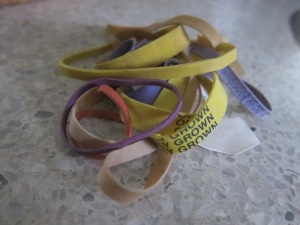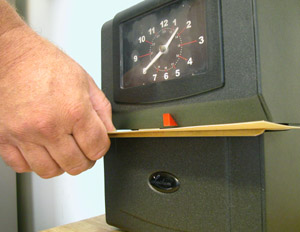 Okay, we have all been bombarded with advertising slogans and when it comes around to holiday time, the main event is perfume and jewelry. “A diamond is forever” and “Quality is Remembered Long After the Price is Forgotten” are two ubiquitous refrains from the world of luxury-item sales pitches. Naturally, advertising can run the gamut from bending the truth to down and dirty lying, but recent events have convinced me that the whole of the jewelry industry is a fictional construct that is rivaled only by the lore of the world’s religions. And who here doesn’t believe in the power imbued in jewelry?
Okay, we have all been bombarded with advertising slogans and when it comes around to holiday time, the main event is perfume and jewelry. “A diamond is forever” and “Quality is Remembered Long After the Price is Forgotten” are two ubiquitous refrains from the world of luxury-item sales pitches. Naturally, advertising can run the gamut from bending the truth to down and dirty lying, but recent events have convinced me that the whole of the jewelry industry is a fictional construct that is rivaled only by the lore of the world’s religions. And who here doesn’t believe in the power imbued in jewelry?
I admit, I never did. Fancy things hanging from my fingers, neck and ears just kept me from doing things that were active and fun. I never found the pleasure involved in passively glittering, as if a hunting lure for birds or fish. It is possible that some women find a kind of empowerment in being be-jeweled, but for me it was quite the opposite; limiting and inhibiting – maybe even as a control mechanism. Here, dear, take this shiny object and be content, this is how much I care (in value). And, over time, it hasn’t changed much as both a token of affection or guilt.
So imagine the bind I find myself in, having inherited objects of desire and/or apology crafted in gold and precious stones from people I valued, people now absent. Yes, there is the sentimental factor, but, mostly, there is reversion to the material stuff. Plus, there is no placeness in it. And there the stuff sits, languishing in much the same way that it did when it decorated those who appreciated it more than I ever can. After a seemingly appropriate waiting period, it is time for a parting of ways. But how, with something that has such a commodious value? I headed out for “jewelers row” to unload the stuff.
In large cities there are diamond dealers, even diamond districts. An entire industry is built on the jewelry trade. That should be the place to go. It is like its own city within the city, an enclave of people who live and breathe gold. They fill entire blocks of four or five story buildings. The funny thing is that they all work in competition with each other but there is a symbiosis, a collaborative atmosphere. Their shops are separate but they come and go freely to other shops, and I get the distinct feeling that they trade among themselves and maybe even do group buying from the same distributors. Perhaps they are all related by marriage, as in a small town. I imagine that all the shop facades are joined backstage, like a false Western storefront set, and where many of the honchos are gathered around a table gambling with diamonds. I mean, they are worth way more than money, right?
Some of the shops have fancy showrooms with lots of mirrors and crystal chandeliers, similar to casinos I have visited. Others are less glitzy and even more tacky than casinos. One had an office atmosphere with a line of desks (and a surveillance camera over each) and a counter more like you might see at an optician’s. The workers break down into the bosses, those who sell, those who assess, those who test and weigh, those who make or fix. The seven dwarfs may mine the gems, but there is definitely a hierarchical structure to the business of jewelry. I even heard an employee describe the man to see as not just a jeweler, but a watchmaker – a man of skill as well as know-how.
What did I come away with? It is all lights and mirrors and the only science, let alone alchemy, is the weighing and pricing of gold – not market price, but rather jewelers’ price. I was told a few times that the only value in the booty I presented is as scrap. How does one explain that thirty years before, just one of the items I held was appraised at four times what I was being offered for the entire lot today? Surprisingly, two potential buyers quoted the same amount for the “load”; the next doubled their matching bids; a fourth offered the same as the first two but for just three items, with no interest in the “lot”; and the last shop offered three times as much as the first two, but in three weeks, not now (this one must be psychic about gold values).
So despite all the pretense of acid tests and digital scales, the monetary value of these “forever” baubles was fairly low. Of course, all that overhead has to be factored (and I didn’t even see the bodyguards), and also the price that the jewels could possibly fetch in the current retail market and then subtracting the age-related style deflation – well, being a seller in a buyer’s world – you can see where I am headed with this. Just like a casino, you can’t possibly beat the house. Since the game is made up and controlled by the dealers, you can’t compete. The only “forever” with jewels is the endless supply of suckers who keep the industry afloat. The family jewels is a hoax. Except for those whose families are in the business.








































